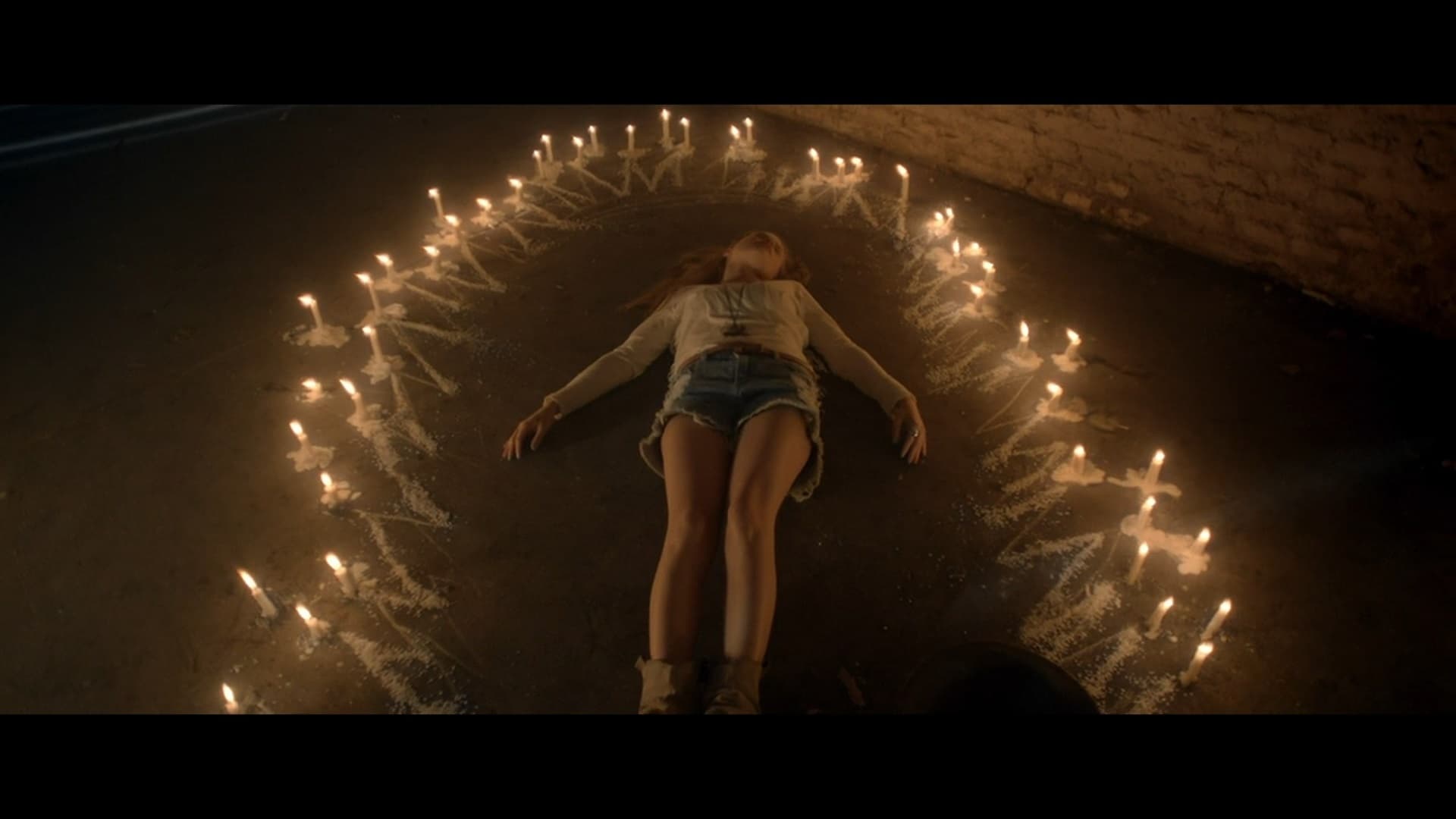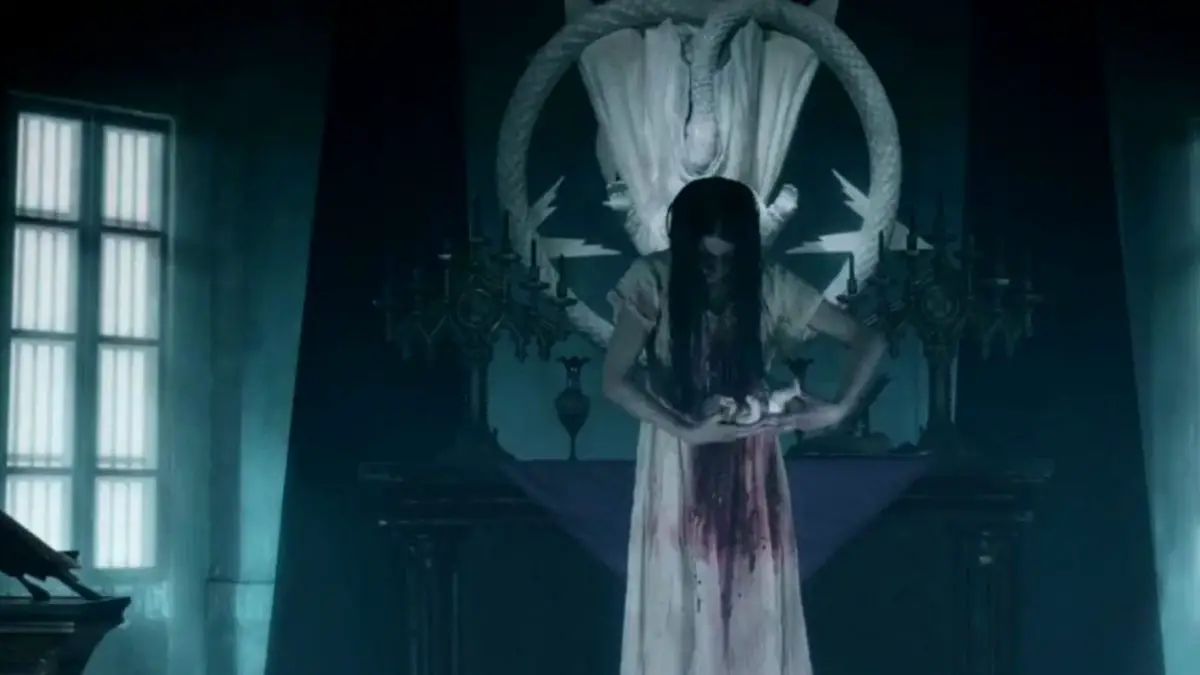Introduction
Luciferina is a 2018 Argentine supernatural horror film written and directed by Gonzalo Calzada. It is the first installment in his planned Trilogy of Virgins. The film follows Natalia, a 19-year-old novice nun, whose return home after a family tragedy spirals into a journey of mystical rituals, suppressed memories, and spiritual awakening through darkness, sex, and exorcism.
As Natalia struggles to reconcile her religious upbringing with mysterious visions and forbidden desires, she uncovers terrifying secrets about her family—and herself. What begins as grief soon becomes a spiritual and bodily transformation, blurring the lines between sacred and profane.
Plot Summary
Natalia has been living in a convent, trying to distance herself from her troubled past. When her mother dies under unclear circumstances and her father falls into a vegetative state, she returns to the family home. There, she reconnects with her rebellious sister Ángela, who is emotionally volatile and driven by rage.
Ángela convinces Natalia and a group of friends to travel deep into the jungle to visit a shaman and take part in a ritual using a sacred plant. This psychedelic journey is meant to heal—but instead opens a gateway to demonic forces and ancestral guilt.
During the ritual, Natalia experiences grotesque visions, violent possessions, and an overwhelming sense of evil. She comes to believe a demonic entity is growing stronger, feeding off her family's past and her own repression. The climax builds toward an unconventional exorcism—one rooted not in prayer, but in Natalia's full bodily and sexual acceptance of her own power. Through this act, she defeats the demon, but the price is enormous.
Natalia returns to the convent changed—physically, emotionally, spiritually. Pregnant with an uncertain child, she is left with a new mission: to find the other two virgins connected to this prophecy and complete the transformation that has only just begun.

Themes & Symbolism
Religiosity vs. Paganism
The film contrasts the rigid purity of convent life with primal, jungle-bound ritualism. Through this contrast, it examines how both religious systems and pagan beliefs offer tools for transcendence—but also dangers of manipulation, repression, and loss of identity.
Sexuality as Salvation and Sin
Where most horror films punish female sexuality, Luciferina empowers it. Natalia’s sexual awakening is not framed as sinful but as essential. Her body becomes both battleground and weapon, and the controversial “sexorcism” scene becomes a turning point where shame is transformed into strength.
Family Trauma and Legacy
Natalia's spiritual crisis is inseparable from her family's buried past—abuse, silence, and unspoken violence. These inherited traumas shape her reality, and only by confronting them head-on can she begin to heal. The film suggests that spiritual salvation is impossible without reckoning with generational pain.
Empowerment Through Suffering
Suffering is central to Natalia’s transformation. She must endure physical pain, emotional betrayal, and spiritual confusion to awaken her true self. The film presents her not as a victim of horror but as a phoenix emerging from ritual fire—scarred, but powerful.

Strengths
-
Stunning Finale
The climax is one of the most original in modern horror—combining sex, ritual, violence, and exorcism into a singular, unforgettable vision. Bold, polarizing, and visually intense, it stands out as a defining sequence. -
Ambiguous Realities
The film blurs dreams, hallucinations, and actual demonic events, making it hard for both the viewer and the characters to know what’s real. This uncertainty fuels the film’s tension and philosophical depth. -
Feminine Power Narrative
Rarely does horror celebrate female agency so unapologetically. Natalia's journey is one of bodily and spiritual ownership—through darkness, not despite it.
Weaknesses
-
Pacing Issues
At nearly two hours, the film occasionally drags, especially in the middle section. Some subplots feel underdeveloped and slow down the narrative momentum. -
Inconsistent Tone
The film swings between psychological horror, supernatural thriller, and erotic surrealism. While some may find this blend fascinating, others might see it as uneven or jarring. -
Overuse of Jump Scares
Certain scenes rely on traditional horror tactics—like loud noises or sudden appearances—that feel unnecessary given the film’s deeper, more atmospheric strengths.
Reception
Luciferina received generally positive reviews from critics, particularly in horror circles. Viewers praised its bold subject matter, arresting visuals, and strong central performance by Sofía Del Tuffo. However, it also drew criticism for its slow pacing and controversial use of sexuality as ritual.
Many genre fans celebrated it as a fresh voice in Latin American horror, applauding its fusion of religious themes with indigenous mysticism. The film has gained cult status for its unflinching confrontation with taboo subjects and for being one of the rare horror films that centers on female power without reducing its heroine to a victim.

Conclusion
Luciferina is a bold and unsettling film that dares to tread where few horror movies go. It explores themes of repression, faith, sexuality, and transformation with provocative imagery and fearless narrative choices. While it won’t be for everyone, its commitment to atmosphere, symbolism, and character-driven horror make it a standout in contemporary genre cinema.
At its heart, Luciferina is about rebirth through fire—through darkness, ritual, and the reclaiming of what was once considered shameful. It is horror as spiritual awakening, and in Natalia, it finds a heroine who is neither saint nor sinner—but something far more dangerous.
-1751429506-q80.webp)
-1751511488-q80.webp)
-1750907216-q80.webp)
